Why Do Gas Furnace Control Boards Fail?
- jared
- Jul, 29, 2020
- A/C Care, Air Conditioner, HVAC Tips
- Comments Off on Why Do Gas Furnace Control Boards Fail?
Why Do Gas Furnace Control Boards Fail?
The printed circuit board of a furnace is the brains of the whole operation.
It’s the quarterback calling the shots down on the field of high and low voltage circuitry that we work on every day.
A diagnosis of a bad control board isn’t an uncommon one. We make that call a couple of times a week during a busy winter.
Today we talk about the actual parts on the control board that fail and explores some of the most common reasons why.
What is failing on those furnace control boards?
A slice of silicon 10 years old should be the same composition as a one-year-old board. It seems so. Regardless, aging systems do begin to give more problems than newer boards.
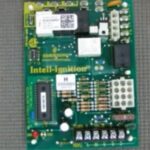
Printed circuit boards these days are composed of shrunk down relays and switches mounted on a rigid board to orchestrate the sequence of operations, that starts up the furnace and gives us heat.
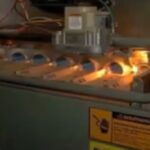
30 and 40-year-old furnaces that we see still out in the field have old relays and switches.
They’re just bigger and sturdier because they’re made from more durable parts.
The smaller boards get, the weaker the material they’re made of.
The material is thinner the solder connections are smaller and the relays are made with tinier pieces of plastic and metal.
Our customers might think a control board should last a lifetime of the furnace and we’d say about 50% of them do.
But all parts on the furnace control board have a life expectancy and many things can happen to accelerate the aging process of the parts on that board.
Assuming that there’s the power to the board, it should function properly. If it’s not, then there’s nothing we can do to bring it back to factory specifications.
You can’t make field solder connections right there on the spot, that is going to meet any kind of standard that the manufacturer set when creating the board.
Different soldering alloys will clash resulting in temporary fixes at best.
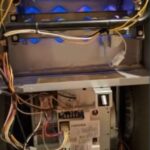
Molex plugs have stems that are secured to the board and soldered in place to adhere to the metallic circuitry that acts as wires do in a house.
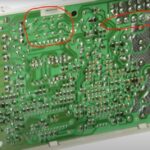
If the wire has a break in it that circuit isn’t going to work.
When the backside of those Molex plug develops a crack, it makes a gap between the stem that goes through the board to the backside, where it meets the circuitry.
Any fractures in that solder connection are going to start creating intermittent abnormalities. There are low-voltage Molex plugs and a high-voltage plugs that’s going to be a part of any furnace control that we work on.
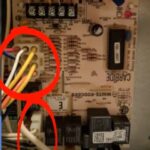
You might ask “What makes the solder connections fracture like that?”
Two words; thermal expansion.
Once the solder is applied and forms, it remains a very rigid material with very little plasticity. Warmth creates expansion and that kind of expansion within the solder joints is going to create a gap between it and the stems that it’s supposed to be attached to.
This is going to cause problems with your boards either now or in the future.
When we see a control board that has fractured solder connections on the back of the board, we let the customer know that it doesn’t meet factory specs anymore and offer to replace it for them so that they don’t have problems in the future.
Problems on Older Furnaces
Relays and switches can stick, burn, and pit.
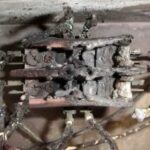
Just like a contactor on the A.C. condenser outside of the home, the control board at the furnace has miniature relays that allow certain motors to receive the voltage that they need to operate.
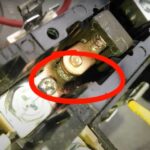
And just like the contactor on the condenser, those furnace relays start to pit and burn from arcing that occurs across the contacts as they close.
High temperatures can melt the protective coating on the windings of the coil of a relay, which can prevent the contacts from closing in the first place.
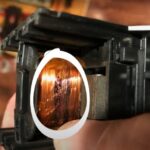
Plastic pieces that the contacts are mounted to, can lose stability with ambient heat, surrounding the relay as well.
This can warp the contacts of the relay causing them to be misaligned and unable to function.
When an electromechanical switch like the ones that are on our boards, is suddenly being used after a long period of downtime, they can become permanently stuck.
Tapping on the relays sometimes can help but only delays the inevitable failure of that board.
Overvoltage like in-rush and other voltage spikes can create overheated situations all the time.
Under voltage can prevent the contacts of a relay from staying closed securely.
And it’s not just the voltage that’s damaging these parts, it’s also the current being carried with that voltage that wears out switches prematurely.
So, now let’s talk about power surges. Asking questions with the homeowner can reveal a lot when diving into an HVAC system that isn’t working properly.
A recent thunderstorm or lightning strikes in the area can send a surge through the house’s electrical system.
That surge might not affect the lights or kitchen appliances in the house, they may not even trip the breaker that the furnace is on at the main panel, but it might take the transformer out before the board sending a jolt onto that sensitive control board.
Brownouts from the local Power Company are notorious for damaging HVAC equipment.
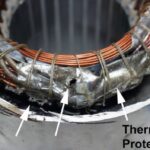
A reduction in power that all the sudden comes back on with no warning at all, could damage the protective coatings on parts causing them to fail, either now or even a couple of years from now.
Another power surge that a house can experience is a car accident in the area, that might have taken out a power line.
As the connections of those high-voltage wires attached to the poles, rip apart or get stretched – that influx of energy and the damage it causes happens instantly.
Many HVAC parts have been taken out by these situations. Causing anywhere from a few thousand dollars worth of damage to just simply blowing a little 3-amperes on the control board.
No one should ever underestimate the freakish damage that can occur to an HVAC system when power surges happen in or around the house.
Next, let’s talk about static electricity.

Careless or unsuspecting technicians who walk across a carpeted floor to get to their furnace can build up more voltage on the body than it can store.

As a result, that voltage will need to be transferred to the next piece of metal it comes in contact with. You don’t want that to be the metal on a control board.

Electrostatic discharge can even develop after you’ve grounded yourself to the furnace the first time. Standing on a carpet can create that static very easily.
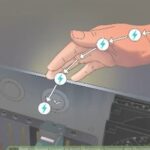
The damage is done to control boards when electrostatic discharge hits the board. There are very thin insulating layers within the control board’s transistors, relays, switches, and solder joints, that will break it down.

What’s even worse is that sometimes that discharge won’t cause the damage to the board immediately. It’ll damage the insulation to a such a degree that the device fails sometimes hours or even years later.
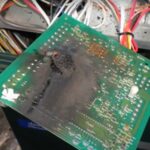
A diagnosis of a bad control board isn’t an uncommon one, but it makes us wonder what that board has gone through during its life to have gotten to the point where it’s now failed.
The parts themselves have an expected lifespan. Everyone agrees with that, but factors such as thermal expansion, power surges, and static electricity, all play a big part in the degradation of a control board over time.
So, we don’t have a definitive answer to how long the furnace control board will last – just be prepared to replace them if the furnace starts to perform erratically. And call us to help!

